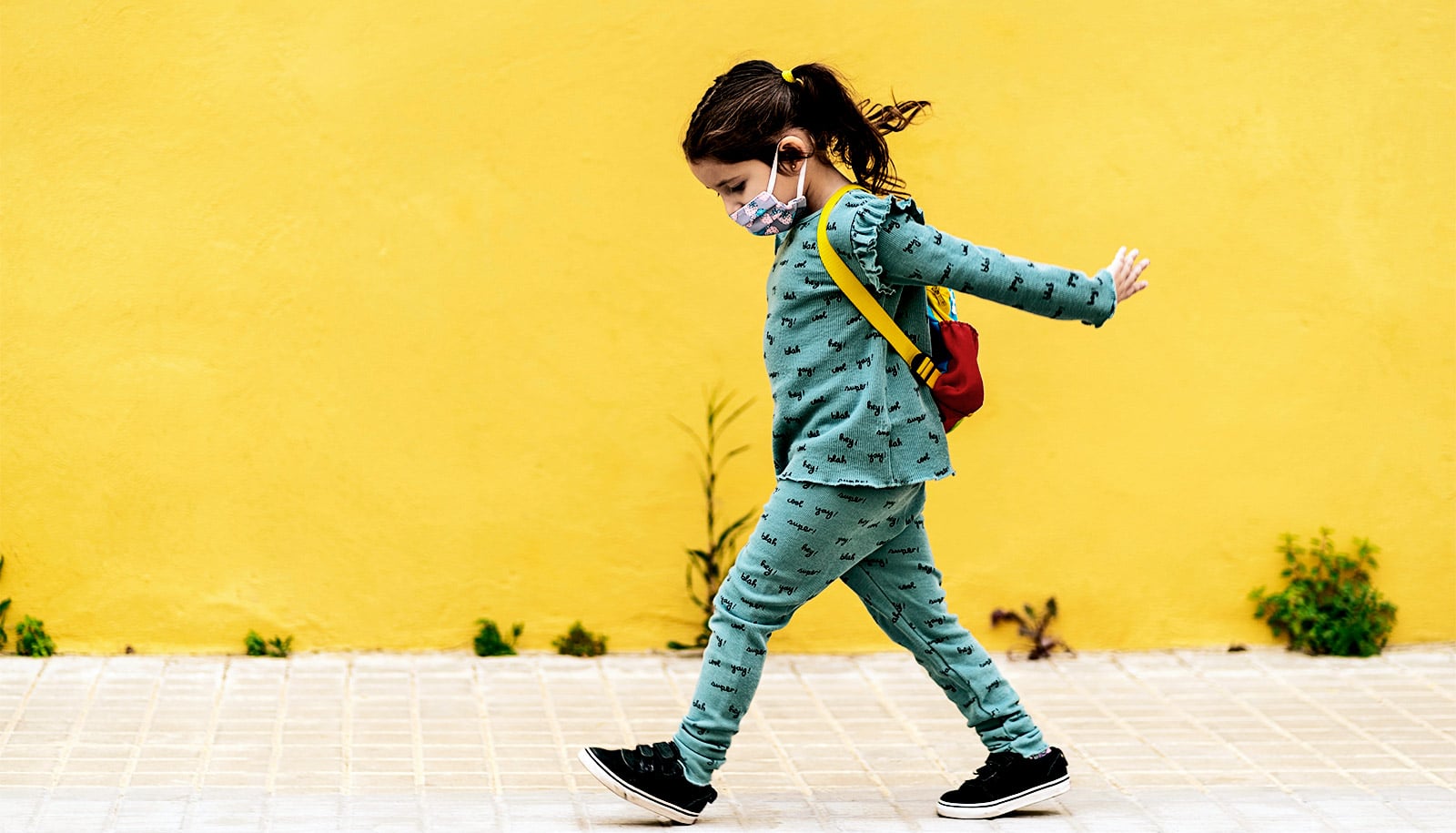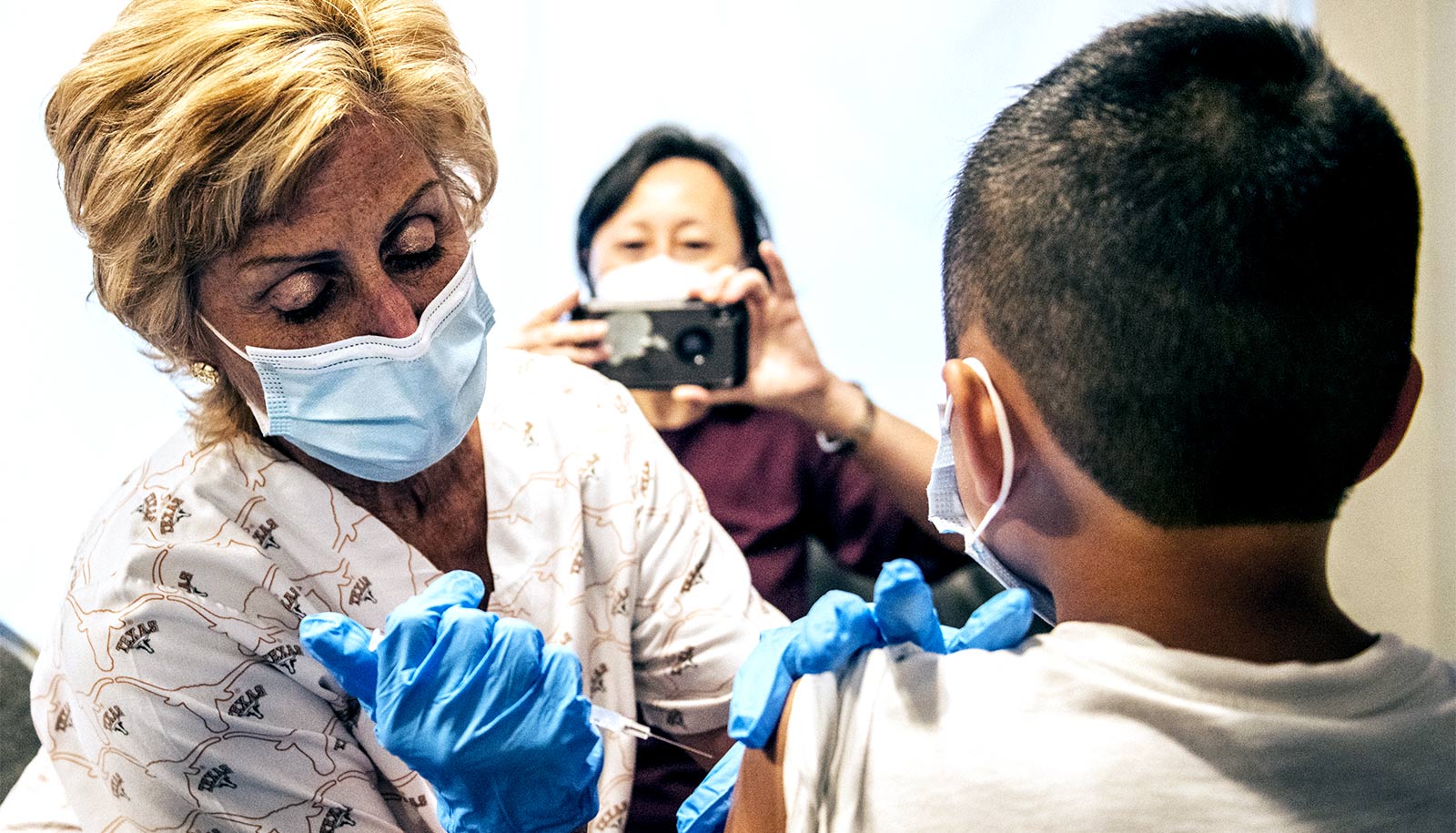More than half a year has passed since the first vaccine for COVID-19 and almost half the US has protection against the SARS-CoV-2 virus. But there still isn’t one for children younger than 12.
Vaccine makers have been working to make their products available to younger patients, launching clinical trials to evaluate whether the vaccines can safely and effectively protect children as young as 6 months.
One site for those trials is at Children’s Hospital of Philadelphia (CHOP), where Jeff Gerber, a pediatrician, epidemiologist, and infectious disease specialist, is heading Moderna’s effort.
Here, Gerber talks about how the vaccines are being adapted for kids, what special considerations go into a pediatric clinical trial, and why giving children access to a COVID-19 vaccine is critical for their health— mentally, emotionally, and physically:
Can you describe what the trial aims to do and its progress to date?
This is the KidCOVE trial, which is testing the Moderna mRNA COVID-19 vaccine in kids from 6 months up until just before they turn 12. Moderna conducted a study for 12 to 17-year-olds that’s under review right now.
KidCOVE, like many of the COVID vaccine trials, is co-led by the National Institutes of Health and industry.
This is a combination phase 2/3 trial. These two parts can be done in direct sequence because this vaccine has already been tested extensively in adults and older children and has lots of safety and effectiveness data.
Phase 2 is what is called the dose finding and age de-escalation portion. They divide the participants into three subcategories: 6-11 years, 2-5 years, and then six months to just under 2. In each of those age categories, the trial starts out by giving a lower dose than what the teenagers and adults get and testing a small number of children to look at safety and immune response.
If all looks good, then they will increase the dose a bit, doing it very carefully by starting with the older age group then moving down, looking at side effects. Phase 2 will finish once they decide they have a dose for each age group with a favorable side effect profile and strong immune response, and that is the dose that will be tested in phase 3. That is a randomized controlled trial, where the vaccine is tested against a placebo. It’s possible that one age group might move into phase 3 ahead of the others.
This trial is spread across up to 80 sites, mostly in the US. CHOP is just one of them. The overall trial will include approximately 7,000 kids, the majority of which will be in the randomized controlled trial. Our expectation at CHOP is to enroll somewhere around 100 subjects.
Rates of COVID-19 are lower now than they were when some of the adult vaccine trials were taking place. How can you tell if the vaccines are effective?
What you can do, and this is something they’re still working on with all the COVID-19 vaccine platforms, is identify what’s called an immunologic correlate of protection. That involves testing your blood and seeing if there is some type of signature or biomarker in your immune system that predicts who will be protected against infection. The thing we hear about most is antibodies, but that’s an oversimplification. Antibodies are the easiest and most accessible part of the immune response to measure, but there are other components.
The primary endpoints of this study are safety and immunogenicity, the type of immune response the vaccine generates: What are the side effects? Are there adverse events, both minor and serious? And what the antibody profile is, compared to what we’ve seen in older subjects from previous trials.
Secondary outcomes include how well those antibodies bind and block virus as well as how the cells of the immune system behave. And we’ll look at effectiveness—how many kids get infected with virus or get the disease after being infected in the vaccinated group versus the placebo group. But there likely aren’t enough children who will be enrolled to make a statistically significant conclusion about this kind of efficacy—effectiveness will be inferred primarily from the antibody response.
How do you follow participants in the study and get the information you need about side effects, immune response, and infection rates?
Generally speaking, it’s a combination of prospectively asking people questions about “how you felt after vaccination, did you have certain symptoms?” Also, when you do bring them in—and this study, like many others, involves many visits where participants come in for checkups—at those times we do blood tests and nasal swabs.
But it also relies on the reports of the subjects. They’re instructed and reminded to let us know if they have COVID-19 symptoms, if they’ve sought medical attention, taken new medications, or received any new diagnoses, for example. It’s particularly focused on capturing any significant or severe disease.
I’ve seen media reports of some teens and pre-teens developing myocarditis, or heart inflammation after vaccination. Is that something you’re tracking?
The study is intentionally designed to pick up any minor or serious adverse events, including MIS-C—multi-inflammatory syndrome in children. With myocarditis, any time a child or subject is hospitalized or has any type of adverse effect that might remotely be related to vaccination—if it was a doctor’s visit, emergency department visit, or hospitalization, we capture that information and a thorough review is done.
There are certain criteria under which the study would be paused while experts on the data safety monitoring board review what’s happened and decide whether a study can continue. That set up is intentionally conservative. We saw that happen with multiple COVID-19 vaccines, and that’s in place for this trial.
How are CHOP and the other sites ensuring that the trial subjects represent a diverse US population?
We’ve tried to be really intentional about that. The sponsor is committed to enrolling a diverse group of subjects with the goal to enroll a group that looks like the US in terms of race and ethnicity. Our part in that is trying to enroll a cohort that looks like Philadelphia. We’ve looked at the race and ethnicity breakdown of the area that CHOP serves and we’ve done our best to enroll a group of subjects that looks similar.
The response to this trial has been amazing. We have many more families interested than we could possibly enroll. So far, we’ve filled every slot we’ve been given. The families and particularly the kids who have come and joined have been amazing—the visits are long, they have to do a lot of stuff as part of the trial—but, their enthusiasm!
Almost 100% of the kids have expressed how they want to help get a vaccine to kids. It’s really neat to see. Nobody likes needles but the kids are really brave and I think they appropriately feel good about themselves. It’s inspiring to see the dedication and sacrifice of the families.
How do you handle informed consent in this study? Do the kids have a say?
We take this very seriously. The sponsor has developed a really thorough consent process that we have adapted for CHOP. There is a consent form for the parents and then there’s an assent form for the children. Any child 7 and above will fill out a form that’s written at grade level. They can read it and then one of the physicians on our team will review it and answer any questions. It’s done individually, we consent the parents and then the child provides assent.
We’ve had kids ask terrific questions. We explain to them what a research study does, what they would be doing as part of this research study. And the most important thing for them to know is that they can say no at any time—now, or all the way until right before the needle gets put in your arm—and there will be no penalties. We make that as clear as possible to try to make sure our kids and parents have agency to choose.
The question a lot of parents are anxiously asking: When can we expect results and ultimately a vaccine approval or authorization for kids?
With any trial there are always some unforeseen delays. Right now the dose finding, age de-escalation portion of the trial is getting near completion and the hope is that the randomized controlled trial portion will start very soon, hopefully within the coming weeks.
The study is a year long. Just like the adult trial, the vaccine is given in two doses, a month apart, then we follow them for a year, looking for adverse events, looking for immune response and whether they get sick or not.
With the adult vaccine trials, the FDA asked for two months of safety data. It’s still unclear whether they will grant that same review time frame to the children’s vaccine trials. That has an impact on when both Pfizer and Moderna vaccines will ultimately get authorized or approved.
It’s becoming clear that there won’t be a vaccine approved for younger children before this school year starts. And considering it takes more than a month to get full immunity, I think realistically, for kids under 12, the most hopeful time that they would be immune, if they choose to get vaccinated, is in the second half of the school year.
Do variants play into how you’re moving ahead with the trial?
This particular study is not designed to test response against variants. But it’s possible that data from the trial could be used to see what level of antibodies is protective against some variant strains. What’s encouraging to me and many other is that adults who are vaccinated seem to be well-protected against current circulating variants. My hope is that the same thing will translate into pediatrics.
Kids tend to get less sick from COVID-19 than adults. Why do you feel it’s so important to vaccinate them?
It’s a great question, because this is generally a different disease in kids than it is in adults. That said, this virus can still harm kids. It’s much less common, but a small number of kids, around 500 in the US, have died from SARS-CoV-2 infections. MIS-C is a complication that can cause you to be severely ill with sometimes lasting effects, and in rare cases can even be fatal.
Another piece of this is that kids make up almost a quarter of the population of this country. It still remains to be precisely determined how much kids contribute to disease spread, but they certainly contribute at some level, so that’s another really important consideration.
But then the other piece, which is so, so important is that kids’ lives, just like adults’ lives, have been turned upside down. From young kids who want to have a playdate or go to daycare to school-age kids for whom school is their life—this pandemic has shut down many of those opportunities. Rates of anxiety and depression and self-harm and obesity are skyrocketing. Kids are falling behind in school.
The public health benefit of vaccinating kids goes beyond preventing infection, it’s also about social-emotional development and mental health.
That’s why both of my kids are vaccinated. I have two teenagers who ran to the Convention Center when they were eligible.
We’ve appropriately initially focused on adults, because this has been primarily a disease of adults—at least relatively speaking. But we can’t forget the children, who have been affected deeply by this pandemic. We have a way out with vaccines and hopefully, it will be a way out for kids as well.
Gerber is an attending physician in the Division of Infectious Diseases at Children’s Hospital of Philadelphia, associate chief clinical research officer in the CHOP Research Institute, associate professor of pediatrics and epidemiology at the University of Pennsylvania Perelman School of Medicine, and senior scholar within the Penn Center for Clinical Epidemiology and Biostatistics.
Source: Penn



